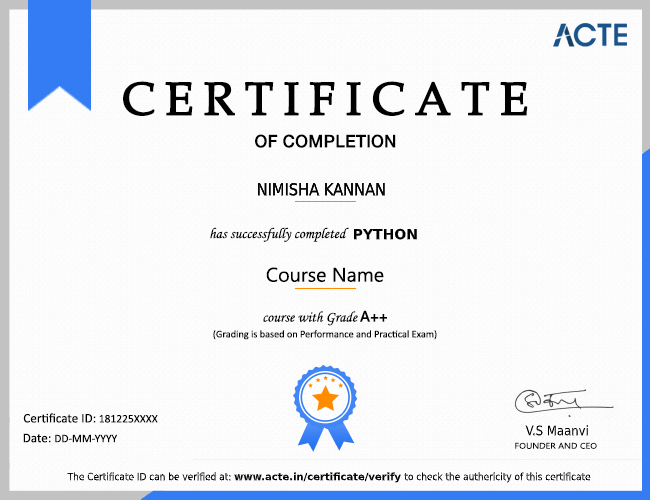About Cassandra Administration Online Training Course
ACTE offers production-certified Cassandra distributions plus 24x7x365 expert support to ensure all Cassandra users can make the most of this powerful database.From its inception, Cassandra has been the premier distributed database on the market, and here at ACTE, we remain committed to continuing that legacy.
Benefits
Cassandra Administration is a distributed database that delivers the high availability, performance, and linear scalability today’s most demanding applications require. It offers operational simplicity and effortless replication across cloud service providers, data centers, and geographies, and it can handle petabytes of information and thousands of concurrent operations per second across hybrid cloud environments.
Cassandra is in use at Constant Contact, CERN, Comcast, eBay, GitHub, GoDaddy, Hulu, Instagram, Intuit, Netflix, Reddit, The Weather Channel, and over 1500 more companies that have large, active data sets.
Cassandra is a peer-to-peer distributed system made up of a cluster of nodes in which any node can accept a read or write request. Similar to Amazon's Dynamo DB, every node in the cluster communicates state information about itself and other nodes using the peer-to-peer gossip communication protocol.
Apache Cassandra is a highly scalable, high-performance distributed database designed to handle large amounts of data across many commodity servers, providing high availability with no single point of failure. It is a type of NoSQL database.
MySQL is a relational database, which supports complex, flexible queries using the SQL query language.Cassandra uses the Cassandra Query Language (CQL) which uses a syntax similar to SQL. Cassandra also provides an older binary query interface via the Thrift protocol.
Cassandra is based on a NoSQL database and does not provide ACID and relational data properties. If you have a strong requirement for ACID properties (for example Financial data), Cassandra would not be a fit in that case.
- Algorithm - Log structured Merge tree - Log Structured Merge Trees - ben stopford.
- Learn how the data is written to memory and disk.
Cassandra isn't too bad. You have to learn to build tables as if you were building around materialized views. The people making cassandra try to make it as easy as possible to learn. The hard part is designing how you want to distribute your data and what tables to build.
Netflix uses Cassandra for its scalability and lack of single points of failure and for cross-regional deployments.In effect, a single global Cassandra cluster can simultaneously service applications and asynchronously replicate data across multiple geographic locations.
Elastic Scalability:
One of the biggest advantages of using Cassandra is its elastic scalability. Cassandra cluster can be easily scaled-up or scaled-down. Interestingly, any number of nodes can be added or deleted in Cassandra cluster without much disturbance
At the cluster level, Cassandra is also able to achieve greater write scalability by partitioning the key space such that each machine is only responsible for a portion of the keys. That implies a higher write throughput, as more writes can be done in parallel.
The way Cassandra manages its data is based on a simple observation: caching can easily improve read speed. This is designed for fast writes, as read can be avoided and optimised with cache. We should manage to have sequential writes and avoid random access. The way this is achieved with Cassandra is using SSTables.
Show More































